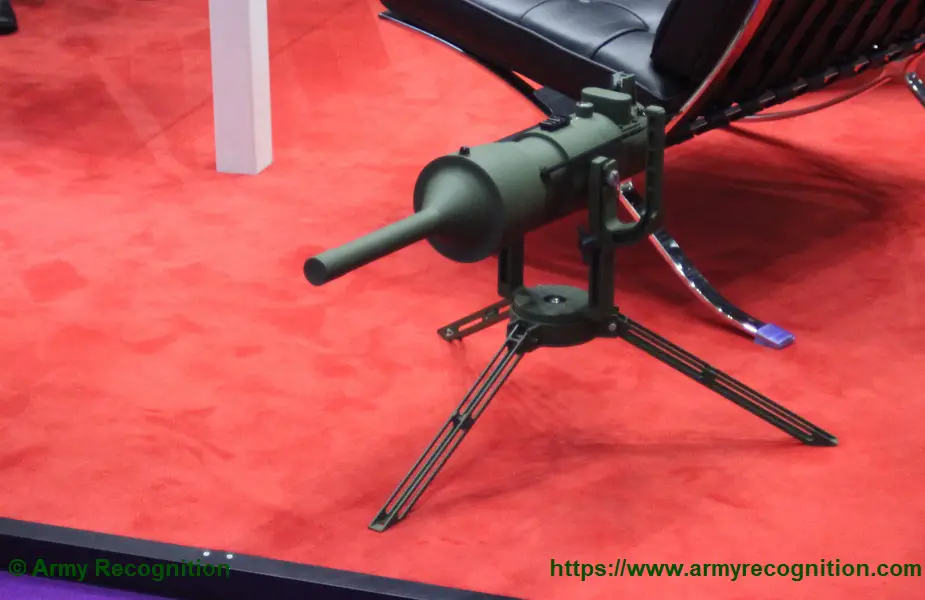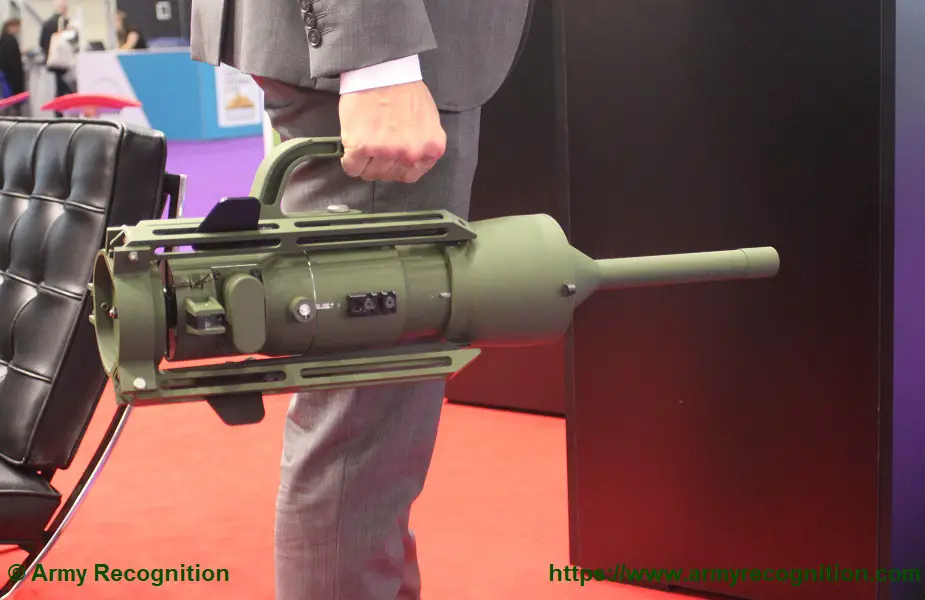German company TDW, a subsidiary of MBDA , has presented a new version of the PARM automated anti-tank weapon during DSEI 2021.

Altough it was originally intended as Cold War weapon system, it has proven to be an effective anti-tank weapon on modern battlefields up to this day and is used by the Bundeswehr both in domestic and overseas operations (Picture source: Army Recognition)
Originally developed and manufactured during the 1990s by TDW for the German Bundeswehr, the Automated Anti-Tank Weapon (AATW) or Panzerabwehr-richtmine (PARM) has been in service with the Bundeswehr for more than 25 years and is today mainly used by the infantry and engineer branch of the German Bundeswehr.
The PARM consists of two main parts: a projectile with a high performance shaped charge, and a rear element with an arm and fuzing device, which are kept together by a barrel with a tripod. The PARM provides multiple operational advantages in both rural and urban terrain.
Equipped with a tripod, the PARM is well suited for use in rapidly changing environments. It can be deployed or retrieved in a matter of minutes. In order to perform this task, only littke training is required for the operator. In comparison to common anti-tank mines, there is no requirement to place it below surface, allowing to be used on hard ground like asphalt or pavement. Therefore, making it ideal for urban warfare.
It is suited for both protective and tactical use and allows to dirsupt, fix or turn the movement of opposing forces. It can be deployed as stand-alone anti-tank weapon or in conjunction with mines of the same or other types. Due to its flexibilty, it is in particular effective complementary to conventional anti-tank mines.
Since the PARM contains a projectile with a shaped charge, it is effective at distances up to 40 meters. At the same time, it offers maximum safety for the soldiers deploying or retrieving it. It is triggered by a fibre optical cable, wich allows the PARM to operate fro covert positions. Therefore, both the sensor and effector of the PARM are difficult to detect.
The PARM is easily aimed and directed by an open sight on the top of the rear element. Ideally deployed in a 90 degree angle to the expected movement of the target, a fibre optical sensor detects the target. Sensor electronics ignite the ejection unit of the projectile, which is equipped with a shaped charge and an impact sensor, which initiates the charge. Up to a range of 40 metres, the shaped charge perforates conventional armour and ERA to a considerable extent. A specific timed electric discharge device ensures that the PARM is compliant to International Humanitarian Law. The safe handling is ensured by a highly sophisticated electro-mechanical safe and arm device, which allows the deactivation and reactivation for later use.

Due to its lightweight and easy handling, PARM offers high operational flexibility (Picture source: Army Recognition)














